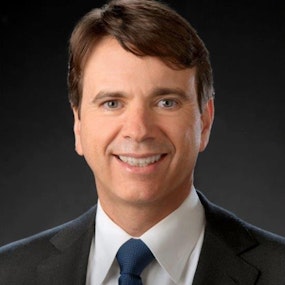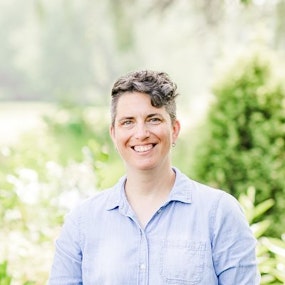ROBERT JOHNSON:
This is Public Health Review Morning Edition for Friday, September 10th, 2021. I'm Robert Johnson.
Here's today's news from the Association of State and Territorial Health Officials.
President Biden renews the administration's commitment to the fight against COVID-19 in a national television address late yesterday. The plan includes vaccine mandates for federal employees and contractors, moving ahead with booster shots, more access to testing, and a focus on keeping schools open.
Dr. Marcus Plescia is ASTHO's chief medical officer. We get his take in today's morning conversation.
The president announced some new steps he wants to take to end the pandemic, and we're going to talk about a few of those. First, let's talk about the executive order involving the Labor Department.
PRESIDENT JOSEPH BIDEN:
My job as president is to protect all Americans. So, tonight I'm announcing that the Department of Labor is developing an emergency rule to require all employers with 100 or more employees—that together employ over 80 million workers—to ensure their workforces are fully vaccinated.
JOHNSON:
Do states and territories have a role to play here?
- MARCUS PLESCIA:
Yes, I think they definitely have a role to play here, and I think this is going to be very useful and supportive in some states where they're trying to use vaccination requirements to increase participation.
But there's other states where this is going to be controversial. This is a bold approach. It is effective, but I think it's going to be tough for some of our members to go forward with this.
JOHNSON:
Let's listen to the president on the next plan of his—this one has to do with healthcare workers.
PRESIDENT BIDEN:
My plan will extend the vaccination requirements that I previously issued in the healthcare field.
Already, I've announced we'll be requiring vaccinations in all nursing home workers who treat patients on Medicare and Medicaid because I had that federal authority.
Tonight, I'm using that same authority to expand that to cover those who work in hospitals, home healthcare facilities, or other medical facilities—a total of 17 million healthcare workers.
JOHNSON:
Marcus Plescia, how does this impact ASTHO members?
PLESCIA:
Well, I think that vaccination requirements for healthcare workers are probably the least controversial requirements. I mean, most people feel that there is a professional and ethical duty for healthcare workers to get vaccinated, so this may be very helpful.
And it will be particularly helpful because it—what the president has done is he's tried to level the playing field. Some of the earlier requirements saying nursing homes were problematic because we were afraid some of those healthcare workers might just pick up and quit and go work somewhere else.
Now, if you want to work in healthcare, for the most part anywhere you you're going to have those requirements. So, hopefully that's really addressing one of the things we were concerned about early on.
JOHNSON:
The President had a lot of ideas and plans that he is going to put into place having to do with vaccines vaccinations, and he reiterated the plan to move forward with boosters starting the week of the 20th of September—assuming that they get safety approvals from the FDA and the CDC.
Does his statement have any impact on the work states and territories are doing to get ready for another mass vaccination effort?
PLESCIA:
States and territories are in pretty good shape for a mass vaccination effort providing boosters to the population. I mean, we have the systems in place now from earlier this year when we did it the first time around.
Our members are very concerned that we follow the science, so it's excellent that he reiterated that this is going to be pending the recommendations of the FDA and the Advisory Council on Immunization Practices. But beyond that, states and territories are ready to go.
JOHNSON:
The President also plans to send more help, especially to hospitals who are just being crushed right now by the Delta variant.
PRESIDENT BIDEN:
Today, I'm announcing that the Defense Department will double the number of military health teams that they'll deploy to help their fellow Americans.
JOHNSON:
ASTHO members must be very pleased with this announcement.
PLESCIA:
Yeah, we need some reinforcements. That was a very sensitive intervention.
I think he's responding to the incredible toll this has taken not just on healthcare workers, but public health workers as well.
JOHNSON:
Zooming out, as you watched the president's speech last night, what's the big takeaway?
PLESCIA:
You know, first of all, the president is refocusing and that's important to do in this pandemic. We've learned that we just, you know, as things change, we have to step back, refocus, find out what we need to do to continue to make progress. And I think that's what he's trying to do here.
The president has looked for ways to use more federal regulatory powers across the board, and that that's a big change, and I think it's going to be interesting to see how folks respond to that and how that plays out.
But it's definitely a bold push to do the thing that's most effective in this pandemic, and that's increased vaccination.
JOHNSON:
States and territories have known about booster shots for several weeks now.
Dr. Norman Oliver, Virginia's health commissioner, says this second mass vaccination effort will be easier than the first.
- NORMAN OLIVER:
It will be easier in the sense that there are numerous channels now.
Before, the bulk of the vaccinations were being done by local health districts, except for what was happening in the healthcare systems themselves.
This time, we have other channels. So, the pharmacies right now are doing the overwhelming bulk of vaccinations, and we would hope that they could continue to do that. We have more than 2,500 providers who can give vaccinations.
JOHNSON:
Also, today is World Suicide Prevention Day, a remembrance marked by increasing suicide rates in the U.S.
Robin Matthies is ASTHO's director of social and behavioral health. She describes an infographic states and territories can use to help educate audiences about the problem.
ROBIN MATTHIES:
I think the most important part of this infographic is it's a tool for states and/or territories to use to look at the shared risk and protective factors that exist between overdose and suicide; and that's not just limited to overdose and suicide—it's a really any risk behavior.
There are some connecting risk behaviors and protective factors that can really highlight how these are interconnected and create cross-sector partnerships that will help, you know, organizations and agencies across the state to better collaborate and align whatever it is that they're working on, assuming that it has those shared risk factors and protective factors involved.
JOHNSON:
The National Suicide Prevention Lifeline is available 24 hours a day.
The number is 1-800-273-8255.
Finally this morning, if you're looking for ideas to improve your COVID-19 outreach to the community, you can learn what state public health teams from Indiana and Virginia have done during a free webinar scheduled for Monday, September 27th. The webinar is the second featuring projects funded by the CDC.
Find a link to sign up for the APPLETREE COVID-19 supplemental project presentations webinar in today's show notes. It'll be right there along with links to everything mentioned in today's report.
Also, remember to follow us on Apple Podcasts and Spotify, or listen on Alexa or Google assistant.
And, if you have a minute, please take time to leave us a rating and a review.
The weekend's here, so that means we'll see you Monday morning for more ASTHO news and information.
I'm Robert Johnson. You're listening to Public Health Review Morning Edition.






